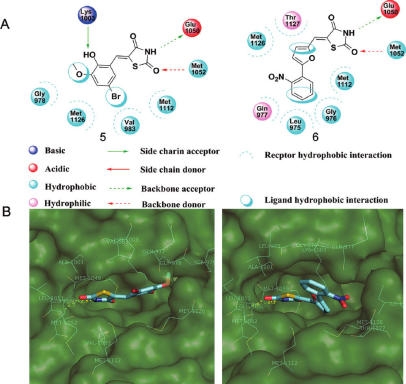SIMM research teams harvest progress on IGF-1R kinase inhibitor research

Potent and high selective IGF-1R inhibitors were recently identified by state-of-the-art screening techniques from SPECS database, which may pave way for the discovery of new drugs for cancer treatment.
Recently, more than 30 thiazolidinediones (TZDs) were identified as potent and high selective small-molecular IGF-1R inhibitors through a hierarchical virtual screening strategy developed with complementing pharmacophore-based screening and docking-based screening techniques. This research progress was collaboratively fulfilled by two research teams from Shanghai Institute of Materia Medica(SIMM), Chinese Academy of Sciences led by Hua-Liang Jiang and Jian Ding and a team from School of Pharmacy, East China University of Technology lead by Hong-Lin Li. The novel discovery was recently published on the latest issue of Journal of Medicinal Chemistry (2010, 53: 2661–2665).
Cancer has been a global threat to human health for centuries without a robust cure due to its complexity in tumorigenesis. Therefore, searching for an efficacious hypotoxic small-molecular antitumor drug has always been a research hit and puzzle in the field of cancer therapy study. Insulin-like growth factor-1 receptor (IGF-1R) tyrosine kinase and its downstream regulated signaling channels Raf-MEK-ERK and AKT-mTOR-S6K are critical mediators of cell proliferation, differentiation and metastasis. A large number of epidemiological and pathological studies have indicated that IGF-1 receptor is over-expressed in many types of human tumor cells due to the increase in insulin-like growth factor-1 (IGF-1), thereby increasing the risk of developing cancers. IGF-1R is a promising research target for cancer therapy; therefore, finding novel and high selective IGF-1R inhibitors maintains important clinical significance and sound application prospects. The results of this collaborative discovery laid a solid foundation for the development of new antitumor agents.
Shanghai Institute of Materia Medica Chinese Academy of Sciences has formed a strategic partnership with the School of Pharmacy, East China University of Technology in developing new antitumor drugs. In addition to this new research progress, the collaborative task force has obtained more than 130 TDZ derivates through modification of the molecular structures and has applied for development and application patents.
This program is supported by The People's Republic of China Ministry of Science and Technology, the National Natural Science Foundation of China and Shanghai Science and Technology Commission.
Source:
Xiaofeng Liu, Hua Xie*, Cheng Luo, Linjiang Tong, Yi Wang, Ting Peng, Jian Ding, Hualiang Jiang and Honglin Li*. Discovery and SAR of Thiazolidine-2,4-dione Analogues as Insulin-like Growth Factor-1 Receptor (IGF-1R) Inhibitors via Hierarchical Virtual Screening. Journal of Medicinal Chemistry, 2010, 53: 2661–2665 (http://pubs.acs.org/toc/jmcmar/current)




